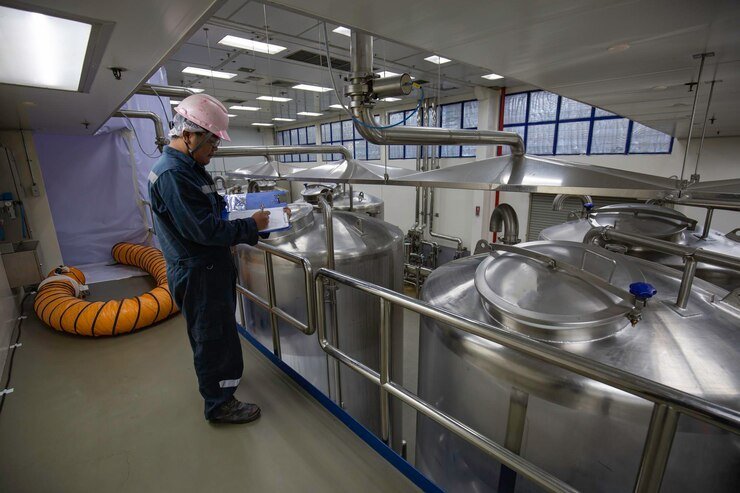In the intricate world of industrial piping systems, components like the DN35 to 1-1/2 reducer play a crucial yet often overlooked role. These small but mighty devices are essential for creating efficient and seamless connections between different pipe sizes. For engineers and professionals in industries ranging from oil and gas to wastewater management, understanding the function and importance of reducers is key to optimizing system performance.
Reducers, including DN35 to 1-1/2 variants, are fundamental in ensuring smooth transitions between pipes of varying diameters. They help maintain flow velocity and minimize pressure loss, which are critical factors in determining the overall efficiency of a piping system. In this blog, we will explore what makes these reducers indispensable, discuss their applications, and offer practical advice on selecting and maintaining them. Whether you’re a seasoned engineer or new to the field, this comprehensive guide aims to enhance your knowledge and appreciation of DN35 to 1-1/2 reducers.
Understanding DN35 to 1-1/2 Reducers
At the heart of any effective piping system lies the reducer, a fitting that adjusts the size of the pipe to meet specific system requirements. These components are used to connect pipes of different diameters, ensuring an even flow of gases or liquids through a system. But what exactly is a DN35 to 1-1/2 reducer?
A reducer is typically defined by its ability to join two pipes of differing diameters seamlessly. In the case of DN35 to 1-1/2 reducers, “DN35” refers to the nominal diameter of the smaller end, while “1-1/2” denotes the size of the larger connection. This transition is vital in maintaining the pressure and velocity of substances moving through the pipes.
Industry standards specify precise measurements for each side of the reducer, ensuring compatibility across systems and equipment. These standards are meticulously followed to guarantee that DN35 to 1-1/2 reducers fit perfectly into existing pipelines, preventing leaks and other issues. Understanding these specifications is crucial for anyone involved in the design or maintenance of piping systems, as choosing the wrong size can lead to inefficiencies and increased operational costs.
Applications of DN35 to 1-1/2 Reducers
Reducers like the DN35 to 1-1/2 model find their usefulness across a wide range of industries. From chemical plants to food processing facilities, these components are used wherever there is a need to connect pipes of different sizes. They ensure that liquids and gases flow efficiently, making them indispensable in numerous scenarios.
In industries such as oil and gas, reducers help manage the flow of hydrocarbons through pipelines, ensuring safe and efficient transport. Similarly, in water treatment facilities, reducers are used to adjust flow rates and pressures, optimizing the purification process. The versatility of DN35 to 1-1/2 reducers makes them a valuable asset in any setting where fluid dynamics are at play.
Despite their many advantages, using DN35 to 1-1/2 reducers also presents some challenges. For instance, selecting the wrong material can lead to corrosion or mechanical failure. Additionally, improper installation may result in leaks or pressure drops, compromising the system’s integrity. Understanding and mitigating these challenges is crucial for maximizing the benefits of using reducers in industrial applications.

Selection Guide for DN35 to 1-1/2 Reducers
Choosing the right DN35 to 1-1/2 reducer requires careful consideration of several factors. First and foremost is the compatibility with existing systems. Ensuring the reducer fits seamlessly within the pipeline is essential for maintaining system efficiency and preventing leaks.
Material considerations are equally important when selecting a reducer. Depending on the substances being transported, different materials may be required to resist corrosion, withstand high pressures, or endure extreme temperatures. Common materials used in reducers include stainless steel, carbon steel, and various alloys, each offering unique advantages and limitations.
In addition to material and compatibility, it’s essential to consider the specific application requirements. Factors such as flow rate, pressure conditions, and environmental factors should all influence the selection process. By carefully evaluating these elements, you can choose a DN35 to 1-1/2 reducer that meets your system’s needs and enhances its performance.
Installation and Maintenance Best Practices
Proper installation and maintenance are key to ensuring the long-term performance and reliability of DN35 to 1-1/2 reducers. To begin with, it’s crucial to follow a step-by-step installation guide that outlines the necessary procedures for securing and connecting the reducer to the pipeline.
Start by thoroughly cleaning the pipe ends to remove any debris or contaminants that could interfere with the seal. Next, align the reducer with the pipes, ensuring a tight fit to prevent leaks. Use appropriate sealing methods, such as gaskets or welding, depending on the material and application.
Once installed, regular maintenance is essential to keep the reducer functioning optimally. Conduct routine inspections to check for signs of wear, corrosion, or damage. Cleaning the reducer periodically can also help prevent buildup and ensure smooth operation. By adhering to these best practices, you can extend the lifespan of your DN35 to 1-1/2 reducer and maintain the efficiency of your system.
Conclusion
In the world of industrial piping, DN35 to 1-1/2 reducers may be small components, but their impact is substantial. They play a critical role in connecting pipes of different sizes, ensuring efficient flow and maintaining system integrity. By understanding their functions, applications, and best practices, professionals can maximize the benefits these reducers offer.


